As time progresses and technology advances, digital locks have gained significant importance worldwide. Face recognition locks, peephole handles, and digital peepholes are among the latest state-of-the-art technologies used for handles. ALOCK, a prominent manufacturer of these locks and digital handles, offers a variety of models in this category. Professional facial recognition locks are also rapidly expanding in the mobile industry.
All About Door Handles and Face Recognition Locks
Securing homes and workplaces is one of the most critical concerns for people. In the past, traditional locks and keys were used for security, but today, conventional locks have been replaced by smart locks.
These facial recognition locks, thanks to their intelligent performance, bring enhanced security to homes and workplaces.

What Are Face Recognition Handles and Locks?
A face recognition lock or peephole handle is equipped with facial scanning technology. It operates by analyzing the distance between facial features and the texture of the skin.
This type of technology is not limited to door security; it is also widely used for mobile phone security.
The primary application of these locks is in smartphones, residential doors, and business premises. In judicial settings, they are frequently utilized to apprehend criminals and thieves.
Face Detection Handle (Face Detection Lock)
Smart face detection handles, also known as peephole handles, are designed to provide exceptional performance, enhancing security and peace of mind in society.
By boosting safety and tranquility, these smart handles contribute to reducing crime rates. Such face detection handles are primarily used in judicial offices, airports, hotels, and high-traffic areas.
Digital peephole handles are among the safest and most expensive handle models, featuring the ability to recognize individuals’ faces under normal conditions and during movement. The body of these handles is made from zinc alloy, ensuring high durability. These handles also support password registration and include a colored touch screen, making them one of the most advanced handles in today’s market.
Face detection handles and locks are equipped with features such as an easy-to-use menu for user interaction and the ability to download and upload data to the peephole handle using a USB flash drive.
A face recognition lock is a type of smart lock that was initially used in mobile phones. Built on artificial intelligence, these locks accurately identify individuals’ facial features. The increase in crime rates in modern societies has led to greater investment in security technologies to provide enhanced protection for homes and workplaces.
The security systems available in the market consider various factors for controlling access and verifying identities, with biometric face recognition digital locks being one such example.
Face recognition locks analyze facial characteristics such as the distance between the eyes, the distance between the nose and eyes, facial marks, and eye scans. These locks use multiple parameters to scan faces, offering minimal security errors.
Smart locks have significantly advanced in recent years, with features like facial scanning directly connected through Wi-Fi. Some of these smart locks no longer require a mobile phone to operate. It is safe to say that there are a variety of attractive and innovative designs for smart locks, enabling users to enhance the security of their desired locations effectively.
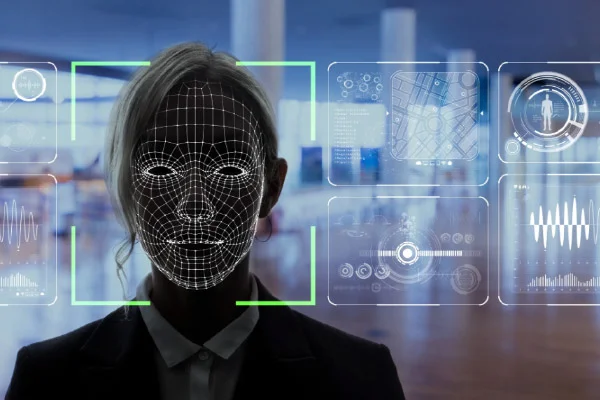
Types of Face Recognition Locks
Face recognition locks come in various types. These digital locks, with their unique features and extensive capabilities, provide security and peace of mind for business owners. The best types of face recognition handles include:
ALOCK P60+ Face 2023 Model
The P60+ Face is a fully smart lock with facial scanning functionality. Its distinct feature compared to other locks is its ability to recognize users’ faces even in complete darkness. This fully automated lock delivers the best response to users in minimal time and offers a high level of security.
ALOCK Pmax Face Peephole Handle
The Pmax Face smart peephole handle is made from high-quality materials and supports various functionalities. This handle is constructed from alloy steel and supports 3D scanning. Pmax Face smart locks are equipped with infrared technology, allowing them to recognize faces even in the dark. Its affordability is one of its most notable features.
Key Features of Face Recognition Locks
Face recognition locks offer a variety of features, the most important of which are:
– Alerts: If someone attempts to open the door, a warning message is sent from the face recognition lock and the digital peephole handle to the property owner. Online face recognition locks send alerts directly via the internet to the account holder and the closest individual to the location.
– Hack-proof Design: The systems of face recognition locks and peephole handles are designed to be virtually unhackable and immune to tampering.
– Excellent Memory: These locks can store the facial data of various individuals, making them highly useful for large corporations and laboratories.
– Easy Accessibility: These locks allow seamless access to the entrance doors.
– Fraud Prevention: Biometric digital locks for facial recognition prevent tampering, hacking, or copying of parameters.
– High Security: Enhanced entrance door security due to advanced alarm and security systems.
– Hygiene-Friendly: No physical contact with the lock when opening the door, reducing the risk of contamination or disease transmission.
Components of Digital Peephole Locks
Smart online face recognition locks consist of various components that analyze the facial details of individuals, converting their information into electronic data and storing it in their database.
These online locks and peephole handles are equipped with intelligent sensors that can distinguish a person’s face from a digital image. The smart sensor, a highly sensitive electronic security component, is used for unlocking screens and logging entry and exit times.
The facial scanning program in these sensors is widely known as Face ID.
How Do Smart Face Recognition Locks Work?
These locks utilize artificial intelligence technology to compare a user’s face with pre-analyzed and stored data. If the information matches, access is granted. The face recognition process for these locks involves the following steps:
– Data Acquisition: Collecting physical and behavioral samples of individuals under predefined conditions.
– Data Analysis: Analyzing the acquired information and categorizing it for extraction.
– Data Extraction: Converting the analyzed data into numerical patterns.
– Data Comparison: Comparing the extracted information with stored patterns.
– Identity Verification: Verifying identity and granting or denying access to the individual.
To use smart face recognition locks, the stored data must match the individual’s information attempting to access the door. If the data does not match, the lock will not recognize the person. Instead, it issues an identity mismatch alert, preventing access to the desired location.
Some smart locks are equipped with two-step authentication systems. After verifying the identity of an individual through facial recognition, these locks request a password in the next step. This additional layer of security ensures that the person attempting access is indeed authorized, effectively preventing unauthorized entry.

Advantages of Face Recognition Locks
Purchasing smart locks eliminates the need for heavy gates, traditional locks, or specialized cameras for individuals and business owners. Digital locks simplify access control and provide notifications regarding movements.
With the rise of internet-connected smart locks, the need to be physically present to open doors is eliminated. With these locks, all doors can be locked with a single press of a button on a smartphone.
The key advantages of face recognition locks include:
– Enhanced Security: They significantly improve security.
– Faster Data Processing: They accelerate information processing.
– Integrated Systems: They integrate security software and applications.
Facial scanning technology in smart locks and handles has become an integral part of daily life due to the widespread use of the internet. This technology has made a notable contribution to human security by reducing unnecessary and unsafe access through facial recognition.
Face recognition smart locks provide significant benefits for homeowners and business owners by enhancing the security of homes and workplaces. While other locks may offer similar levels of security, face recognition locks stand out as a reliable option for safeguarding residences and businesses.
Using Face Recognition Handles in High-Traffic Areas
Face recognition smart handles are primarily used in crowded and busy locations. These handles are highly effective for intelligent access control systems as they can easily identify individuals’ positions. Face recognition handle systems are routine tools and are often used for attendance tracking, simplifying identity verification processes.
– Airports: Facial scanning systems in airports prevent illegal entries and enhance passenger security.
– Banks: Smart handles are also utilized in banks, providing enhanced security for access to these institutions through their advanced systems.
– Hotels: Hotels are another common application for smart handles. These systems aim to provide greater security for hotel guests. Face scanner handles have unique operational systems that alert hotel staff and owners if unauthorized individuals attempt to use them, notifying them of the potential threat.
What to Consider When Buying a Face Recognition Lock
– Facial Recognition Quality: The lock must accurately and swiftly recognize your face to ensure optimal security.
– Recognition Speed: These locks should quickly and easily scan and identify faces, allowing you to enter your home without long waits.
– High Security: The lock must provide robust security to prevent unauthorized access. Ensure the lock features live facial recognition for added safety.
Price of Face Recognition Handles and Locks
The price of face recognition handles and locks is a key concern for individuals and business owners. It’s natural that such advanced technology comes at a higher cost. However, these locks and handles are cost-effective for business owners, institutions, and organizations, given their functionality and benefits.
Prices vary depending on the brand of the lock. The more reputable the brand, the higher the quality and complexity of its systems, which in turn increases the price. While these systems may be expensive, their reliability and effectiveness make them a worthwhile investment for security-focused applications.
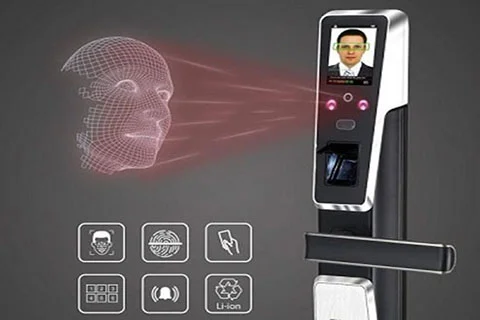
Final Words
The advancement of technology has made the use of various technologies in human life inevitable. Smart locks offer numerous benefits to simplify daily life. With these smart locks and handles, individuals can use their faces to unlock doors. Closing all doors is as simple as pressing a button on a smartphone, ensuring the building’s security.
Facial scanning technology was first implemented in the 1960s by Helen Chan Wolf, Woody Bledsoe, and Charles Bisson. They used a photo-based system to identify individuals. At that time, they had to manually define facial coordinates such as the pupils, inner and outer corners of the eyes, the width of the mouth, and even the hairline. The changes in a person’s face were analyzed and transferred to their computer, which compared the photo with pre-stored data. If the information matched, the system confirmed the individual’s identity. This project, dubbed the “Human-Machine,” was the first to employ facial recognition for identification.
In the 1970s, Japanese scientists added elements like the chin, nose, and cheeks to this system. By the 1990s, DARPA (Defense Advanced Research Projects Agency) and the U.S. Army Research Laboratory (ARL) developed the FERET (Facial Recognition Technology) program to advance automated identification systems. This program aimed to enhance information security and expedite identity verification processes.
Later, the Department of Motor Vehicles in West Virginia used these systems to identify individuals using multiple fake driver’s licenses.
Facial Recognition System:
A facial recognition system is an advanced technology for identifying and verifying an individual’s identity using a digital image, diagnostic algorithm, or video. This system, built on artificial intelligence and deep learning technologies, has become an integral part of modern identity verification systems. It is widely used in banking, university attendance systems, police security in airports, mobile phones, self-driving cars, and automated systems.
One notable advantage of this system is the lack of physical contact. Unlike password-based or fingerprint locks, facial recognition systems allow users to unlock doors from a specified distance without touching the device. This feature enhances the interaction between humans and AI systems.
In more advanced models, facial recognition lock systems are integrated with motion simulators and visual engines. These technologies are frequently used in gaming. In recent years, many mobile device manufacturers and social media platforms, such as Apple, Google Drive, and Sony, have incorporated facial recognition for accessing databases and cloud services.
Global Applications and Innovations
The U.S. Federal Bureau of Investigation (FBI) was the first law enforcement agency to use facial recognition locks in airports and public places for criminal identification. This technology later saw even broader applications in China.
Automotive companies like Tesla utilize facial recognition locks to identify vehicle owners. In advanced car models, this technology is also used to detect driver fatigue or unusual behavior, significantly reducing the risk of accidents and protecting passengers.
Use in Robotic Systems
Humanoid robots, landmine-detecting robots, and service robots in hotels and restaurants extensively use advanced facial recognition systems. Armed robots in modern militaries are equipped with highly advanced facial scanning technology.
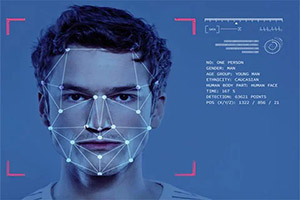
How Does Facial Recognition Work?
By the grace of God, humans can recognize faces without relying on any system. However, in computing, facial recognition is considered a pattern recognition problem. In older facial scanning systems, an individual’s identity could be verified by comparing their image with those in a database. Today’s advanced systems utilize 3D facial scanning technology designed for real-time and online recognition based on light and facial expressions.
The device performs four key steps to identify an individual’s face:
1. Face Detection: The system distinguishes the face from the background of the image.
2. Face Alignment: The detected face image is adjusted based on facial orientation, image size, and photographic characteristics such as lighting and grayscale. The goal of alignment is to localize facial features accurately.
3. Feature Extraction: Facial features such as the eyes, nose, mouth, cheeks, and eyebrows are measured to analyze the face.
4. Identity Matching: The extracted information is compared with pre-stored data in the database. If a match is found, the individual’s identity is confirmed.
Advanced Facial Recognition Systems
In today’s advanced systems, the facial data collected during recognition is converted into coded data and algorithms by pre-programmed computers. These systems never identify users based on photos or videos. Instead, they rely on precise data embedded in the system’s database.
The smart system embedded in the device analyzes the human face using algorithms. For instance, it may measure the relative position of the face, the size or shape of the eyes, cheeks, or nose, and compare it with database information.
Modern facial recognition systems, designed with 3D technology, can identify faces even in complete darkness. These systems utilize IR (infrared) technology, also known as night vision, to achieve such capabilities.
Applications of Peephole Handles and Face Recognition Locks
One of the most common applications of face recognition lock systems is for entrance doors. Residences, offices, archive rooms, and monitoring facilities, due to their heightened security needs, often use peephole handles equipped with facial recognition capabilities to control access and manage different access timeframes. These handles feature a unique user interface compared to biometric identification methods like fingerprint scanning.
Some face recognition scanner handles use highly advanced cameras. For instance, ALOCK brand face recognition handles utilize three cameras simultaneously. These cameras scan an individual’s face from various angles during registration and recognition, creating a 3D facial algorithm. These systems employ geometric metric technology.
With sophisticated sensors integrated into the handles, combined with light-emitting systems and facial scanning cameras, the user’s identity is verified in minimal time with maximum security.
These smart handles employ 3D technology and tracking cameras. When a person stands in front of the lock, motion sensors detect their presence without requiring touch, activating optical trackers. The angled 3D cameras then identify the individual’s face. The cameras can also track movement, allowing facial recognition even if the person changes positions.
The cameras, powered by artificial intelligence, follow the individual’s face, scanning and matching it with database records at the highest possible speed. Movements like head tilts or shifts have no effect on the operation of these handles, as the AI continuously tracks the face to ensure accurate matching.
Biometric Data for Enhanced Security
These biometric systems rely on data captured from an individual’s face and features. This data is mathematically extracted from different facial areas and stored as a unique and unchangeable password.
Additional Security Measures in Face Recognition Unlocks:
To further enhance security and define access types, face recognition locks may also incorporate additional biometric data, such as palm scans and fingerprints. With these smart handles, users can unlock doors using multiple biometric tools simultaneously.
However, due to the high facial scanning speed of ALOCK face recognition locks, biometric fingerprint tools are typically used only when necessary. Both tools offer exceptional speed and maximum security for safeguarding locations.
Limitations of 2.5D Face Recognition Systems
Systems that do not employ 3D scanners, such as 2.5D facial recognition, rely on variable parameters like cheek and lip shapes, eyes, and nose. These systems have a limitation: if two individuals have identical facial features, such as twins, the device may not distinguish between them and might mistakenly authorize access for the second individual.
In contrast, ALOCK smart handles like the Pmax Pro model utilize advanced 3D DID (Depth Identification Device) technology, offering superior facial recognition capabilities to eliminate such issues.
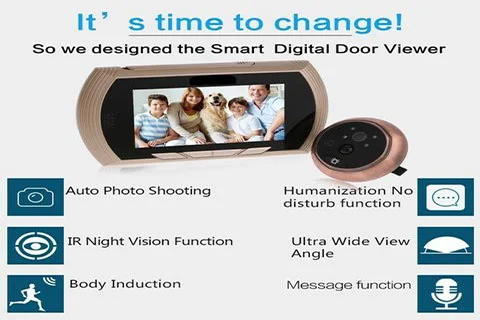
Digital Door Viewer
In ancient times, a tool called a “koloon” was used to announce the presence of someone at the door. Later, to differentiate between men and women at the door, koloons were designed to produce deeper sounds for men and lighter, more delicate sounds for women when struck.
The need to identify individuals outside a door has been a common requirement across global societies for centuries. This need has evolved over time.
Have you ever thought about knowing who is at the door without having to approach it or use a video intercom? Or wished you could know who is at your door even when you’re not at home or the office?
Imagine being able to see the face of the person at your door in real time on your mobile phone.
The Evolution of Door Viewers
Years ago, a product called the “door viewer” was introduced. It consisted of a series of lenses, either glass or plastic, and a cylindrical body, allowing residents to see who was at the door by peering through it. Recently, digital door viewers or electronic peepholes have emerged.
These products feature a camera on the exterior and a color display on the interior, enabling residents to monitor the area outside their door from an indoor screen. Some models even allow users to take photos and videos of visitors.
These viewers are often equipped with a doorbell, eliminating the need for separate accessories. When someone presses the doorbell button, the system activates, and the user can view live or recorded footage from inside.
Some models are equipped with motion detection sensors. These sensors detect the presence of a person in front of the door and automatically activate the device, displaying the live image on the indoor screen.
Advanced Features of Digital Door Viewers
– Motion Detection: Some models include motion sensors that detect movement near the door, automatically activating the system and displaying a live video feed on the indoor monitor.
– Two-Way Communication: Many models allow users to engage in voice conversations with visitors without requiring a phone call, enhancing the interaction.
– Mobile Connectivity: Advanced models can transmit real-time images and videos directly to the homeowner’s mobile device. Various communication protocols are used, such as SIM cards or wireless connectivity, ensuring robust online connections.
Convenience and Power Options
Digital door viewers are powered by rechargeable lithium batteries, which can be recharged using a mobile charger or power bank.
– Battery Status Monitor: The battery level is displayed for convenience.
– Time and Date-Stamped Records: Thanks to the monitor and date-time recording feature, the information and images of the person standing in front of the door can be displayed with the correct date and time.
– Memory Card Support: Some models feature memory card storage for information.
ALOCK Integration with Smart Locks
Modern digital door viewers are integrated into smart locks, such as those from ALOCK. When a user stands in front of the lock, the system activates, displaying the person’s image on an internal monitor and transmitting it to a mobile app.
This allows the homeowner to identify the visitor and unlock the door remotely if desired.
Key Benefits:
1. No need for a separate digital viewer.
2. In addition to identifying visitors, the door can be unlocked online.
3. All equipment operates on a single system with a shared lithium battery, reducing the need for multiple devices and chargers.
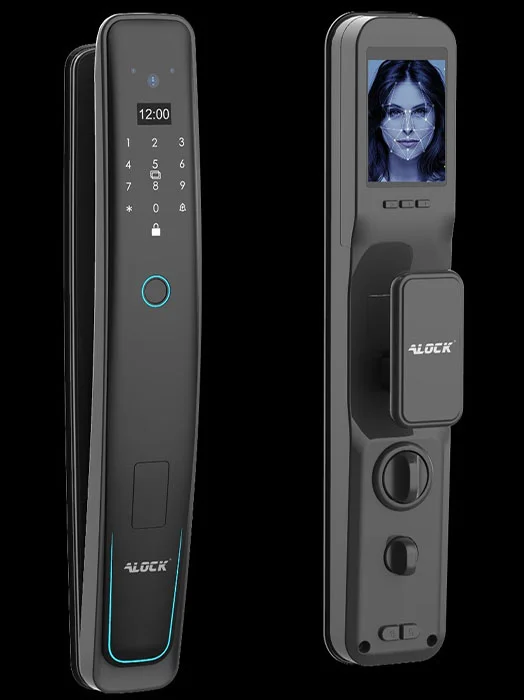
Face Recognition Lock and Peephole Handle Technology
Face recognition locks and peephole handles are systems designed and developed based on artificial intelligence and deep learning technologies. These systems analyze and identify individuals’ faces using a digital frame. Today, face recognition lock and handle technology is integrated with computer vision systems, making it a crucial tool for researchers.
Face recognition technology enables the identification of individuals through a photograph, video frame, or real-time input. Its growing popularity is due to its high accuracy and contactless, non-invasive nature, which is gradually replacing fingerprint recognition systems.
Since its introduction in the 1960s by the U.S. Federal Bureau of Investigation (FBI) for identifying criminals in crowded environments, face recognition technology has gained widespread use. For instance, in China, during an event with a crowd of 500,000 people, face recognition systems successfully identified and apprehended a criminal.
Key Modules of the System
The system comprises four main modules:
1. Scanning Module: Captures facial data.
2. Data Conversion Module: Converts facial information into mathematical formulas.
3. Database: Stores facial data for comparison.
4. Matching Module: Compares captured data with the database.
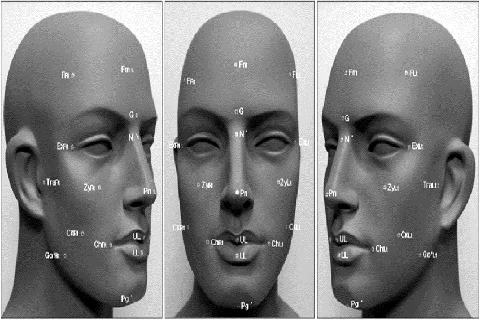
These modules operate in two primary phases:
1. Recognition Phase: Analyzes the individual’s image to ensure it is a human face, not just a photograph.
2. Analysis, Authentication, and Verification Phase: Compares the analyzed image with the database to confirm identity.
Geometric Data Conversion
Face recognition handles convert facial images into geometric data for faster and more accurate analysis. These systems identify the geometry of a person’s face, measuring parameters such as:
– Distance between the eyebrows and nose.
– Forehead to chin length.
– Depth of eye sockets.
– Distance between the nose and lips.
– Size of the lips.
– Cheekbone prominences.
– Eye size.
The system identifies face landmarks and matches them against its database.
Advanced Capabilities
Some advanced devices can recognize individuals under various conditions, such as:
– Smiling or crying.
– Wearing glasses or not.
– With or without facial hair.
Faceprint Technology
In these systems, the facial geometry data is stored in the database as mathematical values, known as a faceprint, similar to how fingerprint systems store unique patterns.
The analysis and recognition rely on these faceprints, providing a highly reliable and efficient identification method.
Below is an image illustrating this concept:
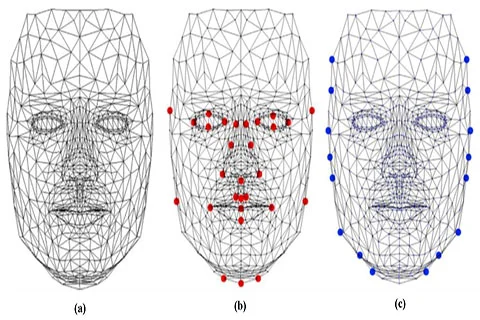
The technology behind peephole handles and face recognition locks has become increasingly popular in recent years. Many security and convenience systems, as well as digital purchasing and payment platforms, are now designed based on facial recognition. Technology companies such as Apple, Google, and others have extensively utilized this feature in areas like database access, unlocking smartphones, security center digital cameras, airport systems, online sales and payment software, and more.
In this technology, integrated cameras identify individuals in 2D, 2.5D, or 3D formats and match the data with a database. These databases analyze and compare images using sophisticated algorithms. Even INTERPOL employs this system globally to identify criminals flagged with red notices.
Highly Practical Peephole Handles and Face Recognition Locks
One of the most practical tools in modern times is the peephole handle and face recognition lock. These handles allow individuals to unlock doors using their faces. Some reputable brands include motion detection sensors, which activate the facial scanning system as soon as a person stands in front of the lock, eliminating the need for any physical touch.
Infrared sensors are also integrated into these systems, enabling the device to identify and scan users’ faces even in complete darkness. Both 2.5D and 3D technologies are employed in these systems to enhance performance.
ALOCK: A Leading Brand in Face Recognition Locks
ALOCK is one of the prominent brands in the Turkey market offering peephole handles with this advanced technology. The company incorporates cutting-edge algorithms, motion detection sensors, and infrared technology into its products to provide maximum comfort and security for users. In addition to facial recognition technology, ALOCK has also integrated palm recognition technology into its products, allowing individuals to unlock doors by analyzing their palms without requiring any physical contact. This innovative approach offers users unparalleled ease and security.